
© Gemma Clucas
Monitoring seabird diets in the Gulf of Maine
Seabirds can be fantastic indicators of ocean health and changes in their diets can often tell us about changes in the wider marine ecosystem. The Gulf of Maine is warming extremely rapidly, and we are already seeing seabirds struggling to find the right prey to feed to their chicks.
To better understand changes in the birds’ diets and what this means for the Gulf of Maine as a whole, I have created a seabird diet monitoring network, where I am using faecal samples to study the diets of terns and alcids using DNA metabarcoding techniques. This diet monitoring will not only help us to understand changes in the birds’ breeding success, but also changes in the availability of forage fish to other marine predators. This is key for ecosystem-based management, which is currently under development in the region.
My faecal DNA diet monitoring network relies heavily on collaborations with Shoals Marine Lab, the Audubon Society’s Seabird Research Institute, and the U.S. Fish and Wildlife Service. I am extremely grateful to everyone who has been pooped on for this project!
Image above: A Roseate Tern with a sand lance.
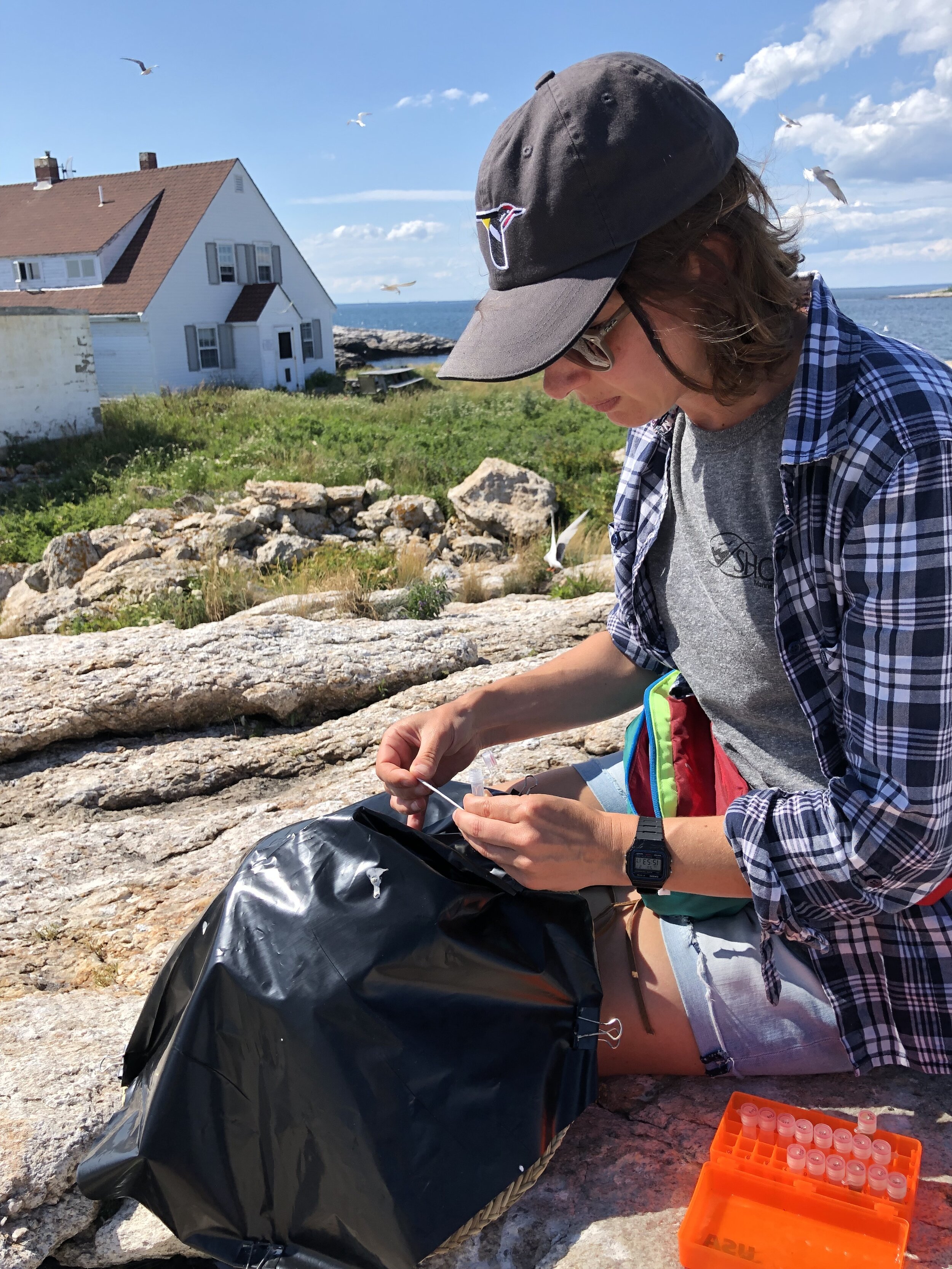
The easiest way to get faecal samples from Common Terns? Cover your hat with plastic and head out into the colony. They have great aim! Photo by Elizabeth Craig.
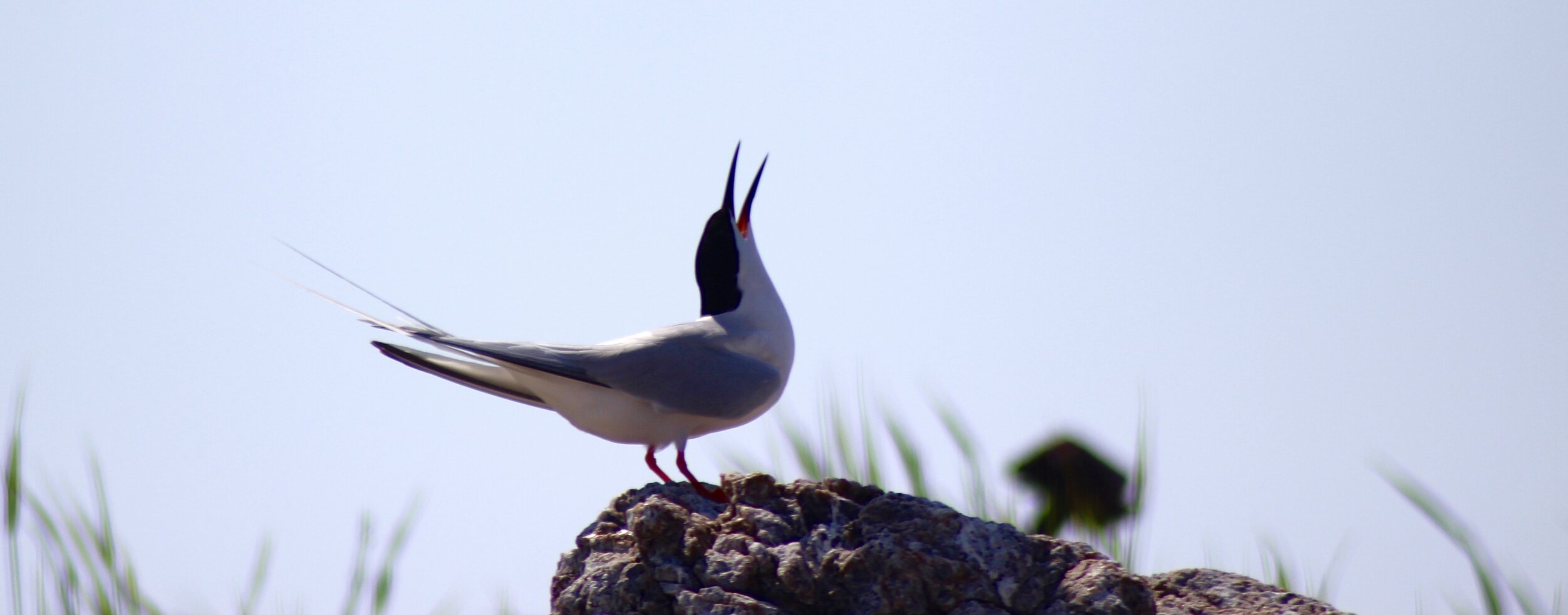
Roseate Tern, July 2017
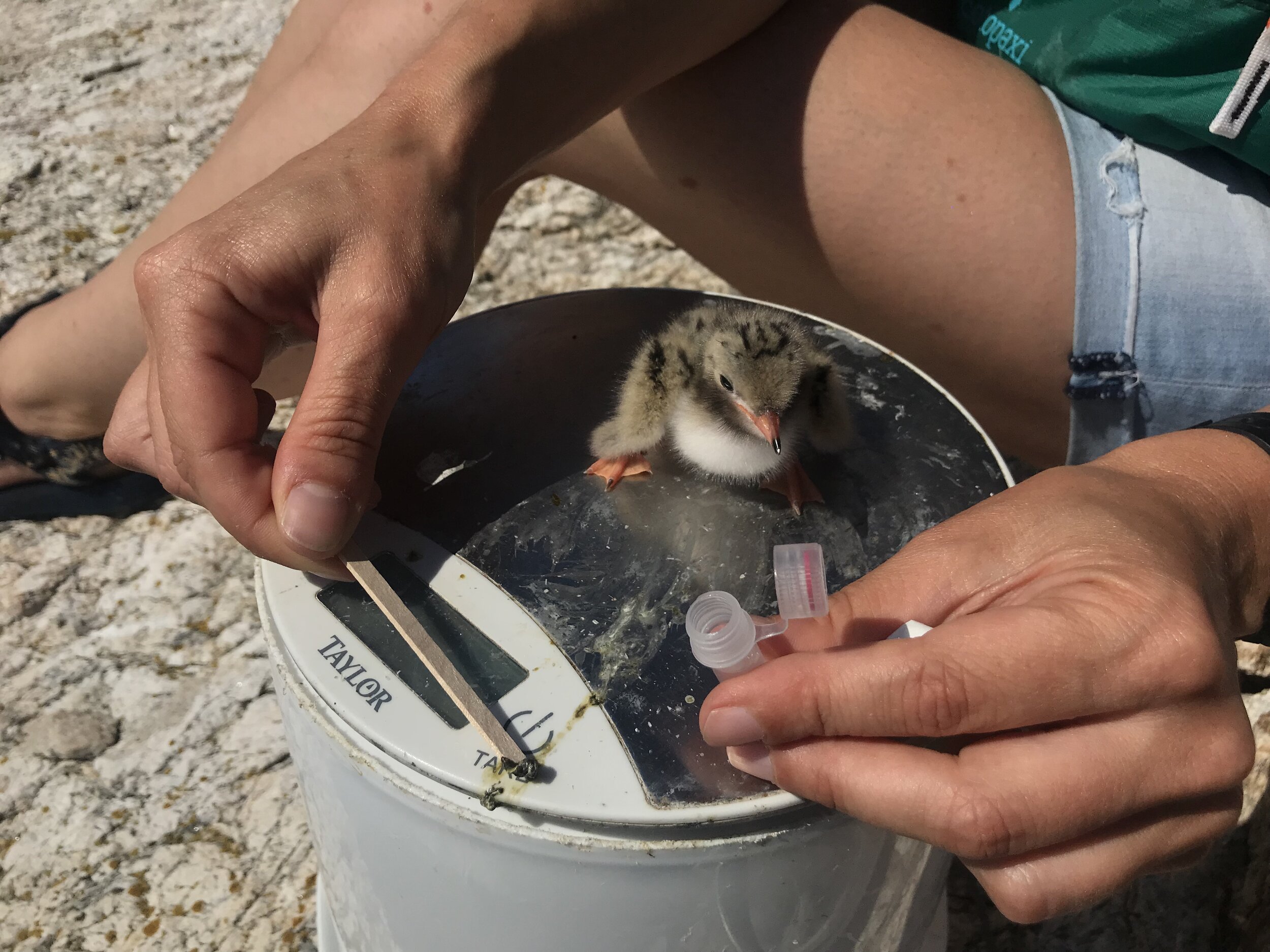
Thanks little one! Most chicks will poop for us on our weighing scales when we go to band them. Photo by Elizabeth Craig.
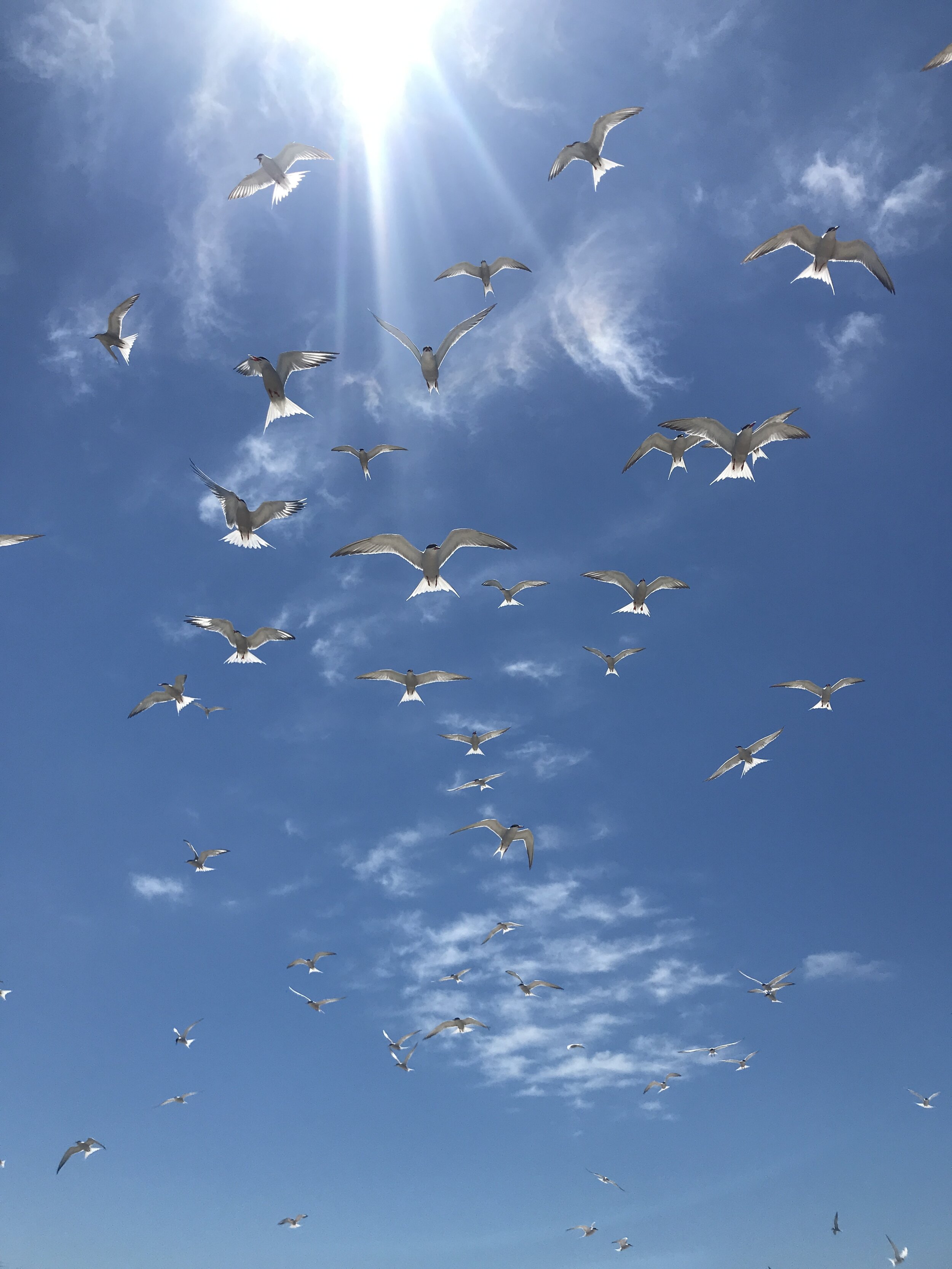
Common Terns at Monomoy NWR, June 2019.
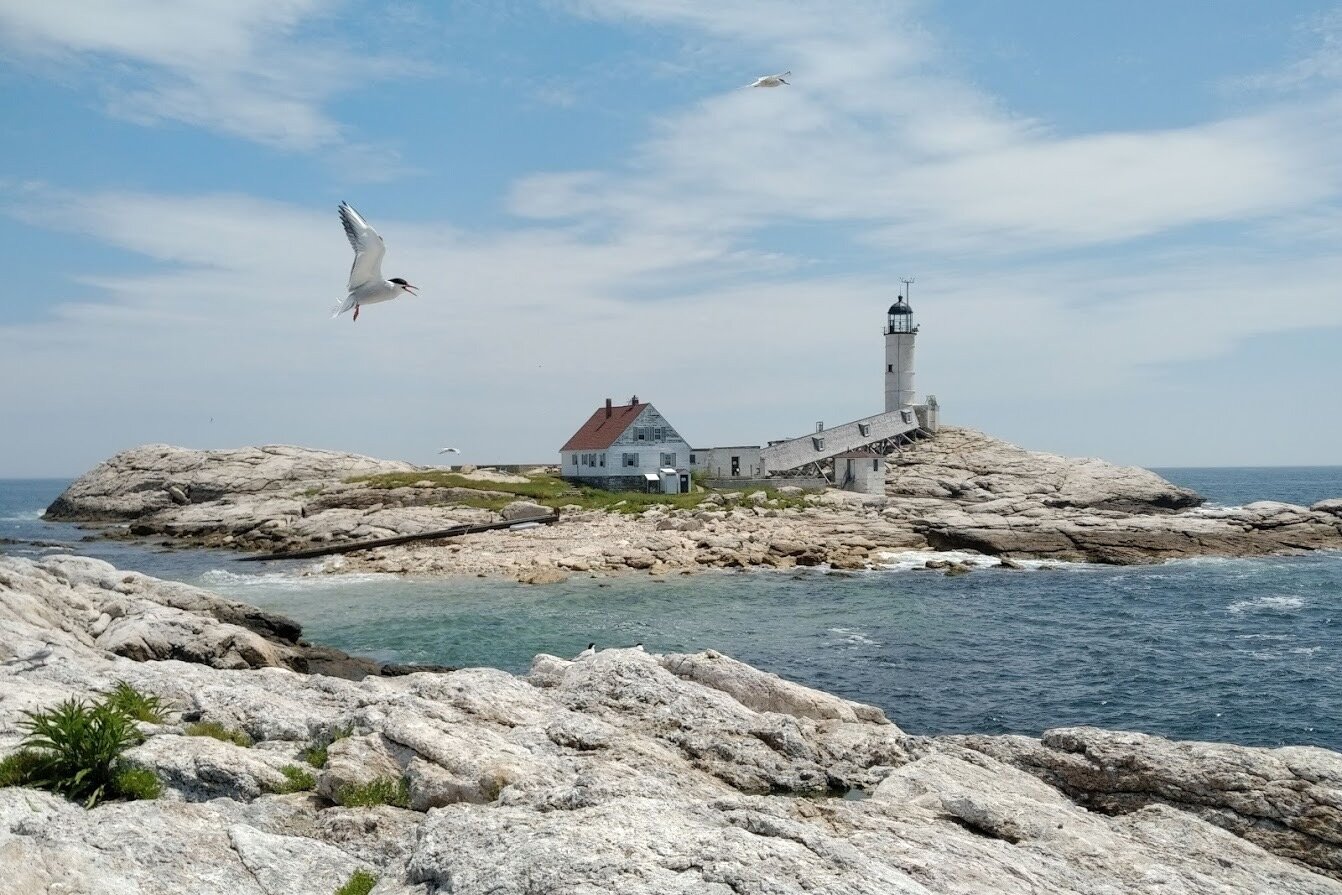
Seavey Island, Isles of Shoals, June 2018.

Atlantic butterfish show up in high numbers when the Gulf of Maine is at its warmest. Unfortunately, these fish are too wide for the tern chicks to swallow, and so they will often starve if they are only fed butterfish.
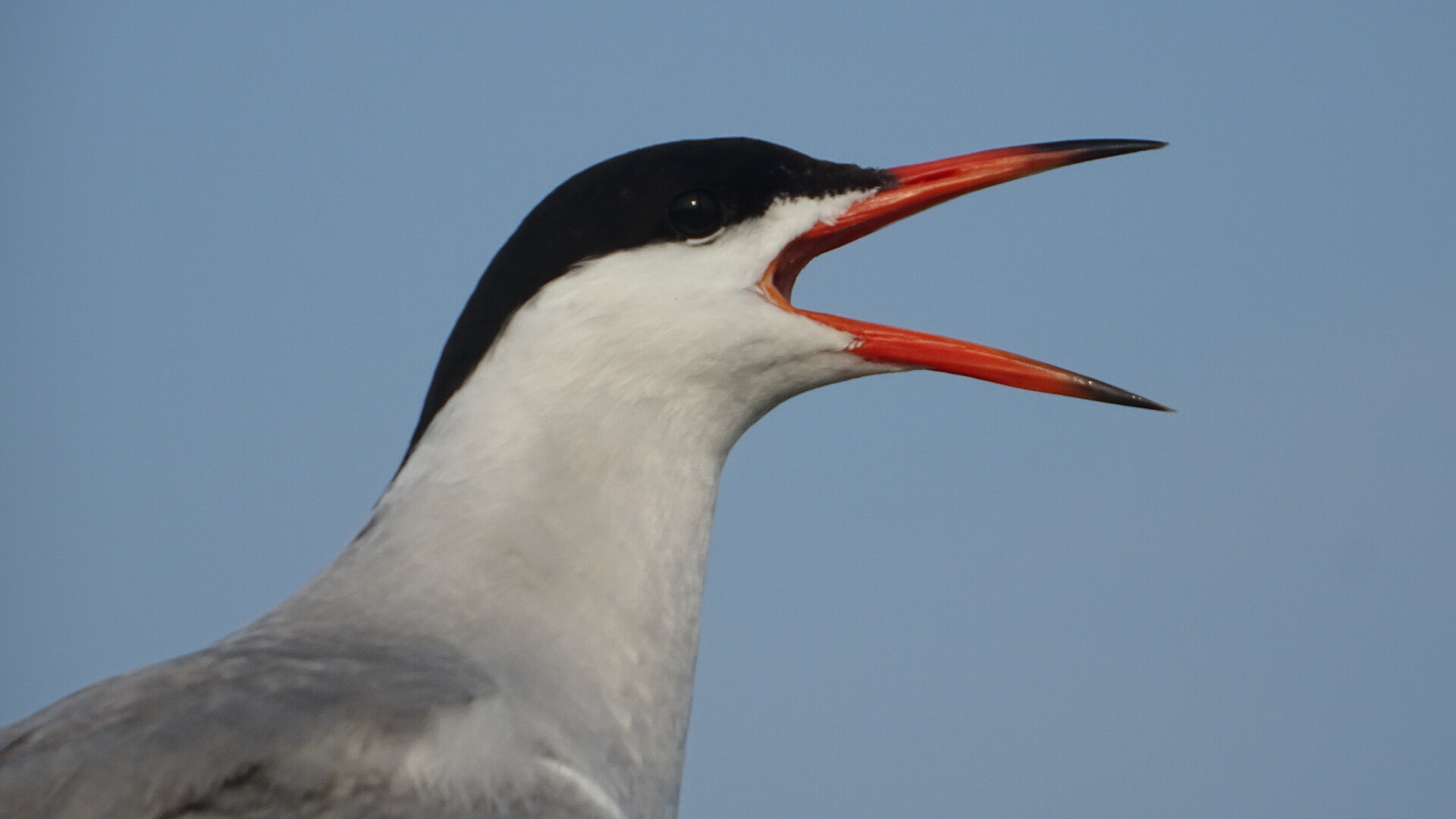
Common Tern, July 2020.

Sand lances are the preferred prey of Roseate Terns.

A Common Tern chick begging for food, not long after hatching. Monomoy NWR, June 2019.

Another view of Seavey Island from the bird blind. July 2020.